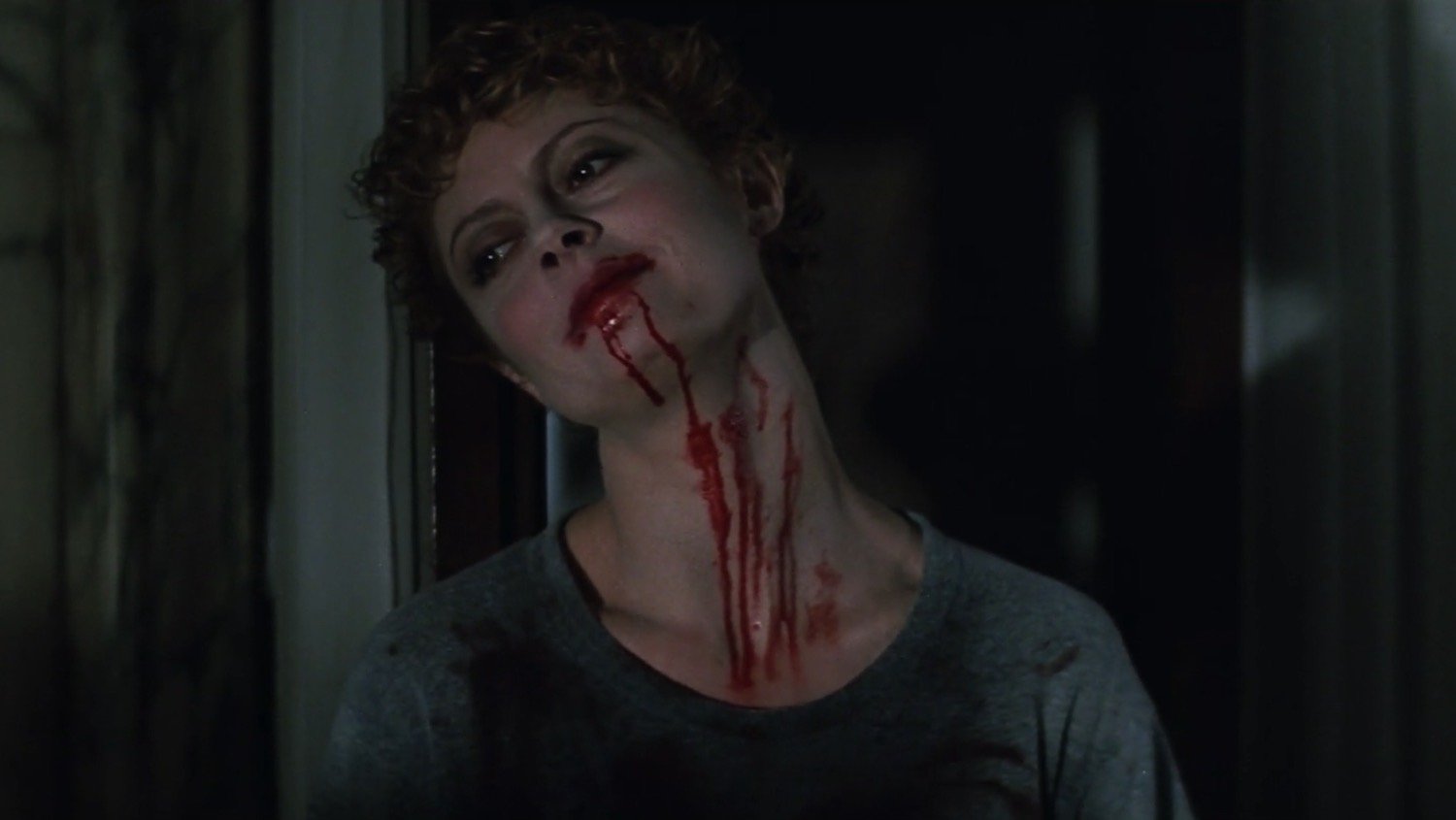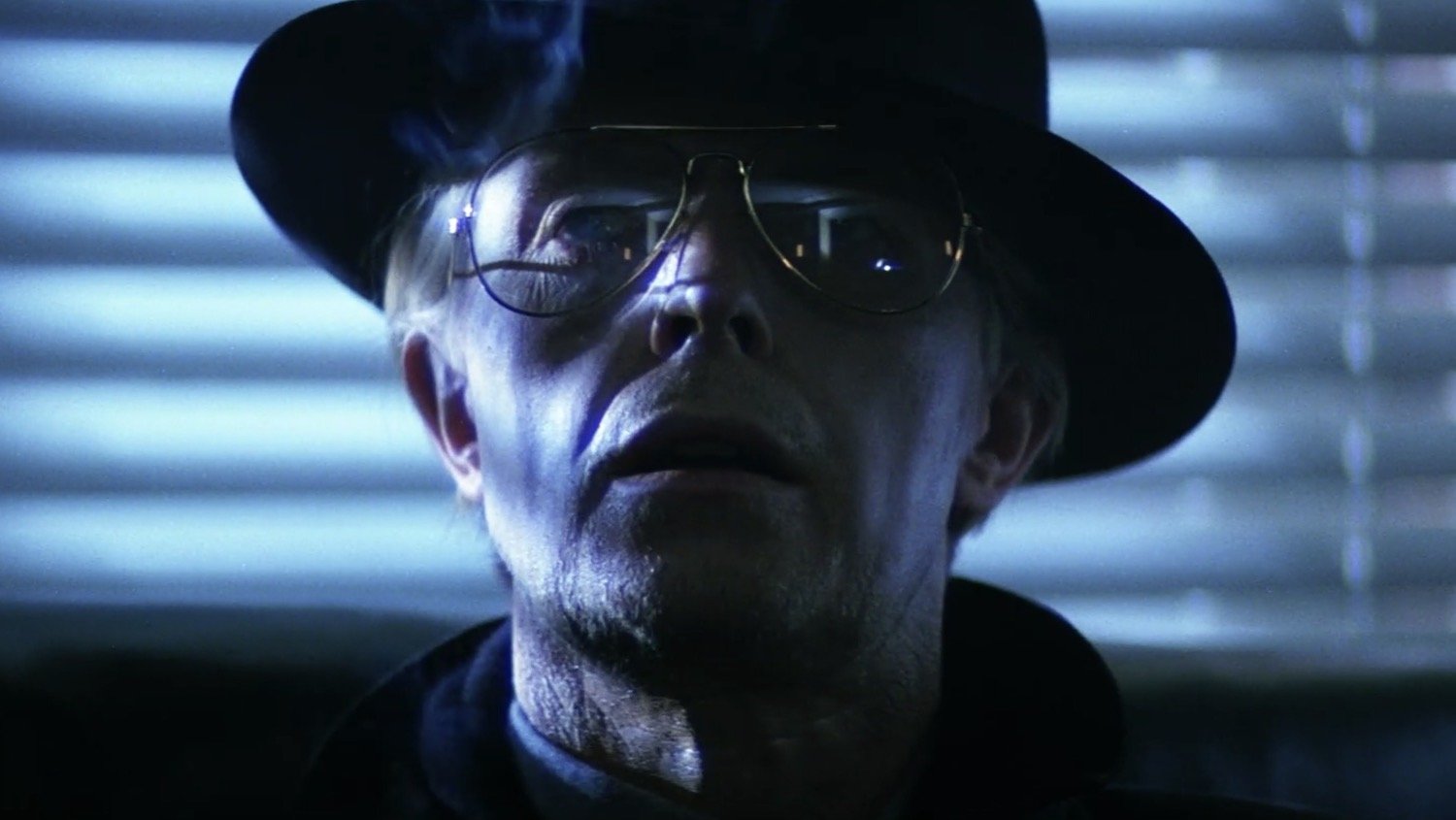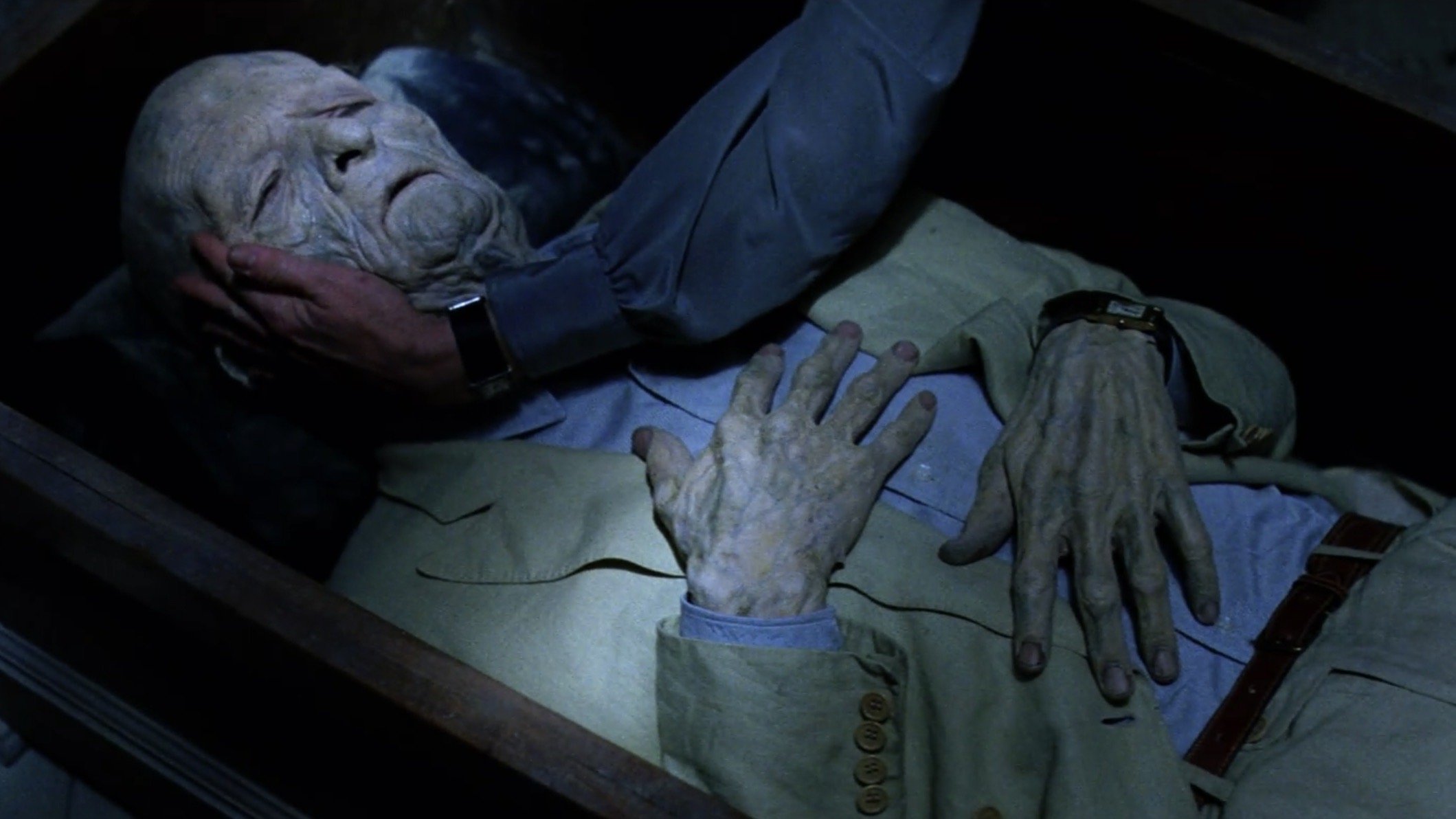In ‘The Hunger,’ David Bowie Cedes the Spotlight to the Immortal Catherine Deneuve and Susan Sarandon
This post contains spoilers for The Hunger.
I have a memory of being in New Orleans at a young age while they were shooting Déjà Vu, one of the late Tony Scott’s many collaborations with Denzel Washington. As we all know, New Orleans is the heart of vampire territory. One other hidden gem of Scott’s that I just discovered and should have probably seen a long time ago is his feature-length directorial debut, The Hunger, which hit theaters on this day in 1983.
With cinematography by Stephen Goldblatt, The Hunger has the stylized look of an early music video, where everything is chic and backlit and there are white see-through curtains and the wings of doves fluttering. Characters smoke and wear sunglasses indoors. These vampires can go out during the day, but they still prefer to inhabit shadowy rooms, as if they belong to the same school of electromagnetic hypersensitivity as Michael McKean’s character on Better Call Saul. Thank God there are windows behind them to let some natural light into their townhouse.
Scott’s vampire movie starts off as a tale of two bloodsuckers — the goth forebears of the hipster duo in Only Lovers Left Alive — who stalk humans in New York nightclubs and are sensual creatures. In a good bit of casting, one of them is played by David Bowie.
Story continues below
People have written reams about the opening sequence of The Hunger alone. Pamela Power’s editing cuts right at the viewer, slashing at one’s senses with images of a musician and monkey, both in cages: one on stage, the other in a research lab, where it tears its mate apart and eats it. This foreshadows what the movie’s alpha vamp, Miriam Blaylock, played by Catherine Deneuve, will do emotionally to Bowie’s character, John.
Note how, in the shower, Miriam gives a disinterested “What?” as John repeats back her old promise of “Forever and ever,” the one she makes all her lovers.
I’m jumping around a bit, but the movie does that, too. Going by the MasterClass definition, The Hunger’s opening sequence would appear to feature both cross-cutting and parallel editing. It cross-cuts between three scenes, two of which may be happening simultaneously.
Before their shower, as the swinging vampire couple makes its first attack on a human couple, the sequence flashes forward. Then, it loops back, and then, to the side, keeping the viewer off-balance and threading its three scenes together like a knot of intertwined limbs in a ménage à trois. Perfect for a love triangle.
A Cousin to QT and Carmilla
There might be an inspirational throughline from The Hunger to perennial Motion Bitcher favorite From Dusk Till Dawn, unless it’s just a coincidence that Scott would go on to direct another Quentin Tarantino script with the aforementioned True Romance in 1993. The Hunger starts out as Bowie’s movie, but it, too, undergoes a perspectival shift midway, as John’s hair begins falling out and he experiences rapid-onset aging before the viewer’s eyes.
After that, it becomes much more Deneuve’s movie. The Hunger pulls the old switcheroo on us — and is all the better for it — as Miriam files the decrepit John away, forever awake and aware, in a box in her collection of old lovers.
I kind of like this gal. She’s the black widow of bloodsuckers. It’s especially gratifying to see Deneuve take command of The Hunger after propping up uncomfortable rape scenes for Roman Polanski in his 1965 psychological thriller, Repulsion. Years later, Polanski would famously flee the country when faced with the threat of a protracted jail sentence for a real-life statutory rape.
Story continues below
If only Miriam didn’t have to drain the life out of human beings. She next turns her sights on gerontologist Sarah Roberts (a young Susan Sarandon, who kept the last name as her stage name even after divorcing Chris Sarandon, the vampire next door in Fright Night in 1985). Sarah has written a book on “Sleep and Longevity,” something we night people can never hope to attain as we cycle through the vampire rhythms of our own existence.
At this point, The Hunger becomes a full-on lesbian vampire film, in the tradition of Hammer Horror’s The Vampire Lovers, which itself was based on a novella that predated Bram Stoker’s Dracula book by a full quarter-century.
Don’t get me started on all the ways that Stoker turned the women-centered vampire story, Carmilla, by his fellow Irishman, Sheridan Le Fanu, into a fraternal narrative where men are threatened by women’s sexuality and the head bloodsucker is a bigamist with three brides.
“The virginal brides file past his tomb.” Like From Dusk Till Dawn, The Hunger also features a strong diegetic music component, as goth rockers Bauhaus perform the song, “Bela Lugosi’s Dead,” in the club at the beginning of the movie. The unforgettable soundtrack employs excerpts from classical selections such as Delibes’ “Lakme” and Schubert’s “Trio In E-Flat, Op. 100,” as well.
Forever and Ever
Given that The Hunger came out in the early 1980s, the benighted first-time viewer in me found herself wondering if it was intended, on some level, as a metaphor for the AIDS crisis. History.com indicates, “HIV/AIDS was primarily affecting gay men, intravenous drug users, immigrants, and racial minorities.”
In The Hunger, the title of which alludes to addiction cravings, Miriam bites Sarah on the arm in the same place where a heroin user would shoot up. They’re having a sexual encounter, and afterward, the vampirism infection in Sarah’s bloodstream takes hold of her life like an STD, prompting her to confront Catherine the way a person might do with a stranger after a one-night stand. (Cross-reference: the twilight truck kiss/bite in Kathyrn Bigelow’s Near Dark).
By reframing the sex scene as a Carmilla-esque tryst between two bisexual or lesbian women instead of gay men, Scott and his screenwriters, Ivan Davis and Michael Thomas (adapting Whitley Strieber’s novel), are able to appeal to the ever-present male gaze, yet maybe also piggyback some deeper thematic concerns into this vampire movie of theirs.
Story continues below
Not that every movie needs to align with my own crusading sense of justice, but The Hunger earns points for giving the vamp her comeuppance. It sets the withered, walking cadavers of all her old lovers free and gives us human victims we can care about, too. One of those is a young violin student named Alice (Beth Ehler) and another is Sarah herself, a self-possessed woman who would rather die than be a bloodsucker. Never mind the studio’s tacked-on ending, where she lives to kill another day.
There’s a lot to chew on in this sorely underrated flick. If you haven’t seen The Hunger, don’t mind me, as I’ll just be unclasping my Egyptian ankh pendant and using the sharp end of it to impel you toward a midnight viewing of Scott’s first feature.
Top Gun put us in a fighter jet. Crimson Tide put us aboard a submarine, and Unstoppable put us aboard a runaway train. As for me, vampire hunters? I think I’ve got a new favorite Tony Scott film: The Hunger.





